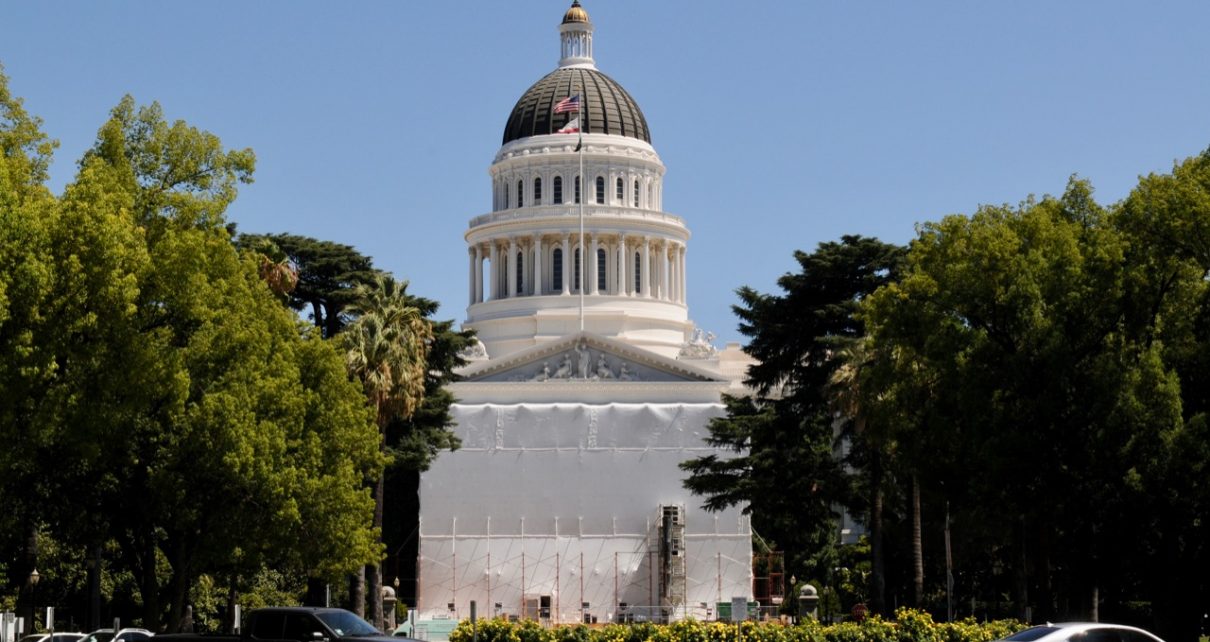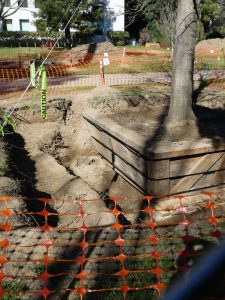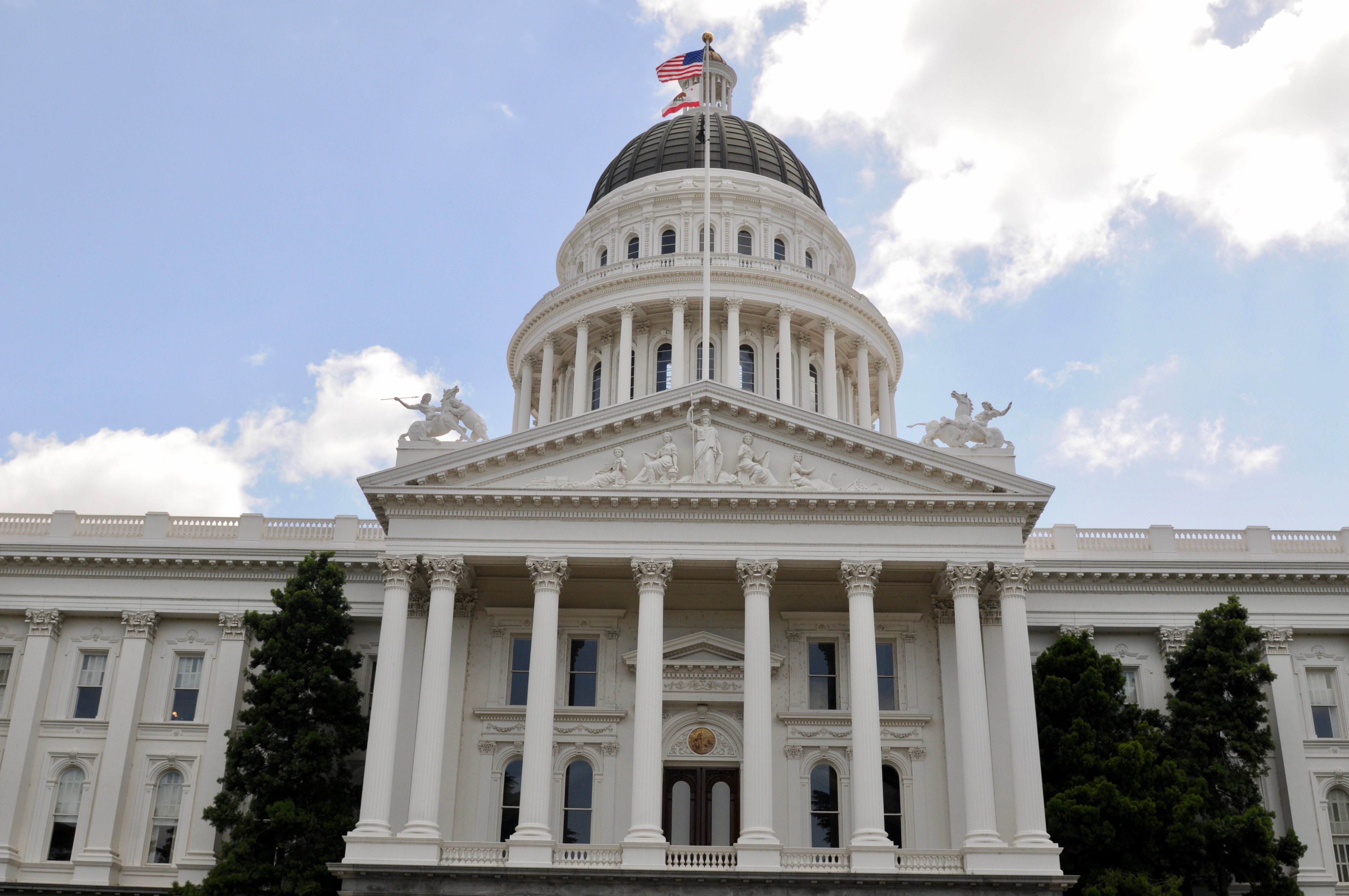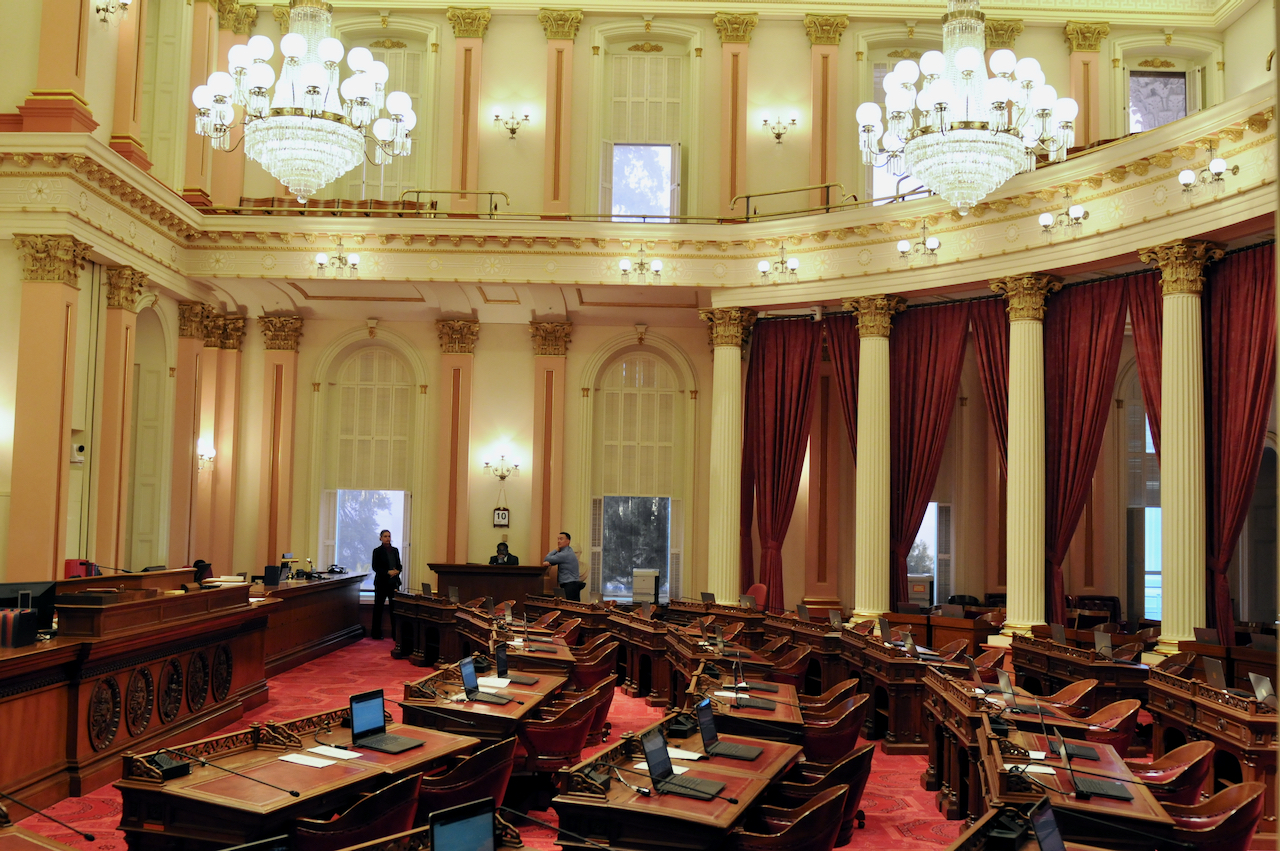
California State Capitol Annex demolition. (Photo: Kevin Sanders for California Globe)
Judge Halts California Capitol Annex Remodel Over CA Environmental Law Violations
Why does the Legislature always violate CEQA?
By Katy Grimes, December 7, 2022 3:48 pm
In September 2020, while the state was still suffering under Gov. Gavin Newsom’s oppressive COVID restrictions of lockdowns, and business and school closures, the Legislature’s Joint Legislative Committee on Rules held a hearing on the plans for the $1.2 billion renovation of the State Capitol while ignoring actual state business urgencies.
Then-Assemblyman Kevin Kiley (R-Granite Bay) told the Globe, “The issues we should be holding hearings on aren’t happening. But the Legislature can spruce up its own digs.”
The State Capitol Annex Project entails a great deal, and it should for $1.2 billion.
Today we learn that the 3rd District Court of Appeals has blocked California’s $1.s billion plan to demo the five decade old Capitol building offices housing the governor and legislators. The appeals court said planners failed to consider options that would be less disruptive to the site’s appearance and public access – meaning that they violated California’s Environmental Quality Act (CEQA).
This wouldn’t be the first time lawmakers blew off their own draconian and byzantine environmental laws. The Golden One Arena sandwiched into downtown Sacramento, was shepherded by none other than then-Senate Pro tem Darrell Steinberg, now the Mayor of Sacramento.
In 2013, I first predicted Steinberg would author some kind of CEQA exemption for the proposed new arena.
CEQA is often called “the tort lawyer full employment act.” So his SB 731 billed as a “CEQA reform bill” could actually be called the “Sacramento Kings full employment act.”
Steinberg claimed he was pursuing CEQA reform before the Sacramento city council approved the arena deal in March. But city officials spent 13 prior years trying to build a publicly funded sports arena. And Steinberg, a former Sacramento city councilman before becoming the state senator for the city, has been involved every step of the way.
Steinberg’s bill, actually allowed the city to bypass addressing real traffic impacts in its Environmental Impact Report on the arena project, among other environmental impacts. And he and his staff lied about it when I directly asked if they were seeking CEQA exemptions.
This wasn’t the first such environmental exemption. A proposed stadium in downtown Los Angeles for a pro football team in 2012, and the new stadium for the San Francisco 49ers in Santa Clara each received CEQA exemptions.
In an April 2022 Globe interview, according to Paula Peper, a now-retired Urban Ecologist for the U.S. Forest Service, and appointed member of the Historic State Capitol Commission, there are 860 trees with 210 different types of species in the the California State Capitol Nationally Registered Historic Park. First plantings began in 1874 and continue through to today.

The new underground Capitol renovation parking is sacrificing 150 to 180 trees surrounding the Capitol, including two huge Southern Magnolia trees with circumferences of 61″ and 31″ each. Peper says trees of that size and maturity cannot be transplanted. And the cost to even try is at $100,000 each.
Peper said they found out that in May 2021 that the Legislature signed a Memorandum of Understanding to go directly to demolition and then to build the new building, without telling the members of the Historic State Capitol Commission.
“This is affecting trees on all four sides of the Capitol,” Peper said.
She explained that of the 860 trees in Capitol Park, many are very old and were given to California as gifts from foreign countries or other states. “The City of Sacramento has only a 50% success rate with moving Palm Trees in the city,” Peper said. “The trees were planted between 1898 and 1903. I have never seen Palms this size moved successfully.”
According to California Environmental Quality Act (CEQA):
“The project would demolish and reconstruct the existing 325,000 square foot existing Capitol Annex building with a new approximately 525,000 square foot building. The project would address numerous deficiencies in the existing building, including: life safety/building code deficiencies, non-compliance with Americans with Disabilities Act (ADA) standards, overcrowding, aging and failing infrastructure, and insufficient public and working space. A new underground visitors/welcome center would be located between 10th Street and the west steps of the Capitol. Existing basement parking under the Annex would be abandoned and replaced with new underground parking (approx. 200 spaces) on the south side of the Capitol.”
The San Francisco Chronicle reported:
State officials did not offer “a reasonable range of alternatives that fostered informed public participation and decision-making,” Justice Harry Hull wrote in a mostly unanimous ruling for a three-judge panel. “Decision-makers and the public were never given an alternative to the project as DGS (the Department of General Services) had defined it.”
For one thing, Hull said, planners failed to discuss an option offered by objectors to move the visitors’ center to the south side of the Capitol, a change that would “substantially lessen significant impacts to the Capitol’s historic west façade and the West Lawn.” He said the state also failed to mention the proposed glass exterior, a late addition to the plan, in its description of the new building when it invited public comments.

Former Assemblyman Ken Cooley (D-Sacramento), who just lost his reelection bid to new Assemblyman Josh Hoover (R-Sacramento), led the Capitol Annex renovation project on the Joint Legislative Rules Committee. Peper said the committee and Cooley were ignoring the Environmental Impact Report, and bypassing California’s Environmental Quality Act in the process. She was concerned that within one decade, Capitol Park will have lost 27% of its trees.
The Capitol Park and Capitol Building are on the National Register of Historic Places, Peper said. “Yet the Joint Rules Committee never submitted renovation plans to the State Preservation Officer at the State Historical Commission,” Peper said. “She had already questioned them: ‘Are we going to have 4 or 5 EIRs coming to us?’”
“Cooley did not answer. We told him, ‘we assume you are going to follow all parts of CEQA, and look at the renovation, rehabilitation,’” Peper said. “And he did not answer. He already knew.”
“It’s all been so sneaky and so secretive,” Peper said. And she said Cooley and the committee refused their California Public Records Act request for information.
There have been four lawsuits filed seeking to halt the Capitol renovation. Two of the cases are Environmental Impact Report cases, and one charges that the Legislature failed to take advantage of the opportunity to reuse the historic building.
SaveOurCapitol.org said in April: “California lawmakers are bulldozing ahead with a costly plan to demolish the East Annex, block public access to the West Steps, and destroy Capitol Park. California is under siege – by a pandemic and catastrophic wildfires – and facing another $54 billion budget deficit. Now is not the time to burden taxpayers with a $1 billion debt for the next 30 years. It’s time to restore, increase public safety, and preserve the historic East Annex, not demolish and replace it.”
“’The court sided with the people of California today,’ said Stephen Cook, lawyer for a group called Save Our Capitol, which filed one of two lawsuits against the plan,” the Chronicle reported.
- ‘Jobs are Down and Workers are Suffering’ While Gov. Newsom Touts Job Increases - December 11, 2024
- Sacramento Mayor Darrell Steinberg’s Career: A Fractured Fairytale - December 11, 2024
- California Exodus: Golden State Tops US Moving Migration Report - December 10, 2024





More reckless and contemptuous behavior from the legislature. What do they care about CEQA (or totally over-spending our money) if it can’t be used to torture the rabble? Naturally the commoners are required to abide by CEQA’s tortuous process but our anointed leaders see themselves as the very special and privileged exception to their own rules. Typical.
Darrell Steinberg’s a pig. How is he a millionaire when he has never been anything buy a politician? The grifting must be very profitable.
It’s time to grab the pitchforks and light the torches.